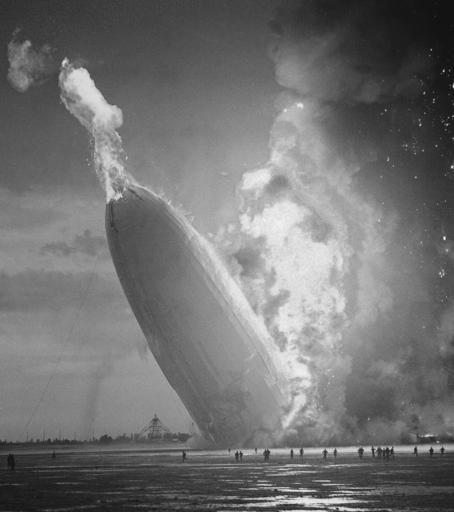MAKE A MEME
View Large Image

| View Original: | 1937_Led_Zepelin_Hindenburg.jpg (980x1104) | |||
| Download: | Original | Medium | Small | Thumb |
| Courtesy of: | www.flickr.com | More Like This | ||
| Keywords: personaluse lakehurst new jersey newjersey usa blackandwhite monochrome outdoor sky black and white The German dirigible Hindenburg crashes to earth, tail first, in flaming ruins after exploding on May 6, 1937, at the U.S. Naval Station in Lakehurst, N.J. The 1920s and 1930s were the golden age of dirigibles which crossed the Atlantic Ocean in about three days -- faster than a ship. The Hindenburg was the largest airship ever built at 804 feet long and flew up to 85 miles per hour while held aloft by hydrogen, which was highly flammable. The disaster, which killed 36 people after a 60-hour transatlantic flight from Germany, ended regular passenger service by the lighter-than-air airships. (AP Photo/Murray Becker) The German dirigible Hindenburg crashes to earth, tail first, in flaming ruins after exploding on May 6, 1937, at the U.S. Naval Station in Lakehurst, N.J. The 1920s and 1930s were the golden age of dirigibles which crossed the Atlantic Ocean in about three days -- faster than a ship. The Hindenburg was the largest airship ever built at 804 feet long and flew up to 85 miles per hour while held aloft by hydrogen, which was highly flammable. The disaster, which killed 36 people after a 60-hour transatlantic flight from Germany, ended regular passenger service by the lighter-than-air airships. (AP Photo/Murray Becker) | ||||